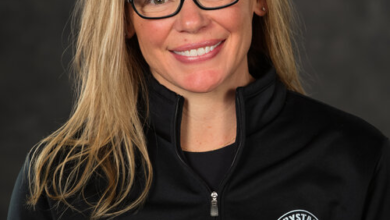Sharp as: Grooming tips for anyone who has hair

GETTY
Gender-inclusive grooming for anyone and everyone who has hair, anywhere
This article first appeared in The House of Wellness magazine.
Nik McIntosh believes so passionately in personalised self-care for everyone, he decided to launch his own gender-neutral trimming tools range, called Tame. “In the past, razor brands have been marketed in a very hyper-masculine way,” he says, “but looking after your hair needn’t be macho.” Here are his top grooming tips and thoughts on the industry.
What inspired you to grow a beard, and how long have you been growing it?
The crew I hung out with in London about 10 years ago had a game we played called Bet You Can’t. It was similar to Truth or Dare, but you actually had to do the dare. One day we were having a conversation about beards. I said I couldn’t grow one and a mate said, “Bet you can’t.” So, in respect of the rules of the game, I did.
SUPPLIED
Nik McIntosh believes so passionately in personalised self-care for everyone, he decided to launch his own gender-neutral trimming tools range, called Tame.
What kind of beard style do you prefer, and how do you maintain it?
There are a lot of different names for the different beard types, but I have a classic full beard. I use beard conditioner, beard oils and balms to keep it soft, as well as beard wax, which keeps it in shape.
How often do you trim or shape your beard, and what tools do you use?
I need to trim/shape my beard every two to three weeks. I generally use a tamer with the longest guard/ comb on for the bulk of my beard, and remove the guard to trim the hairs along my cheek line to keep the lines down my cheeks and across my neck straight and tidy. Then, when I go to the barber, I’ll get them to use a cut-throat razor to keep the lines crisp (you can always use a razor for this and do it yourself).

SUPPLIED
“Growing hair is a natural human experience and the way you want to present yourself is a personal choice,” Nik McIntosh says.
Do you experience skin irritation or discomfort from having a beard, and if so, how do you deal with it?
Much like your scalp, you can get “beardruff”, which generally occurs when your skin dries out or from some sort of fungal skin infection from yeast or something similar. When you don’t have a beard you wash all of that away. Most people will wash their beard with shampoo designed for the head, which can cause the skin under your beard to dry out, so it’s important to use something designed for your beard that’s a bit more gentle on your skin. Beard oils and balms also help keep beardruff away. If all else fails, you just have to cut it off and start again.
What advice would you give someone new to growing a beard who wants to keep it looking its best?
Get a shampoo specifically for your beard (which is also gentle on the skin under it), and oil and balm it regularly. And, depending on how fast your hair grows, you might have to let it get a little scruffy at times to get to a certain length.
GETTY
Most people will wash their beard with shampoo designed for the head, which can cause the skin under your beard to dry out, so it’s important to use something designed for your beard that’s a bit more gentle on your skin.
Do you think that people of any gender should be free to grow or not grow facial hair as they please?
Absolutely. At the end of the day, growing (or not growing) hair is a natural process – much more so than changing the colour of your hair – and yet changing your hair colour is more socially acceptable than growing it, which is kind of odd, when you think about it.
Do you think there is a difference between how society views facial hair on different genders, and if so, how do you address that?
Without a doubt. It’s super challenging but I think the body positivity movement is probably a prime example of how to challenge some of those societal views en masse, and how quickly society can change on some issues.
How do you think companies and brands can be more gender-inclusive with facial hair grooming products and services?
When it comes to any sort of step-change in society, you need pressure to be applied from multiple places to get conversations started and stories heard. Many products out there are suitable for all genders. Take a bike as an example – historically, if it’s pink it’s a girl’s bike, and if it’s blue it’s a boy’s bike. The base product is the same; just how it is presented to people differs. Our current and future product ranges are gender neutral, as growing hair is a natural human experience and the way you want to present yourself is a personal choice.




